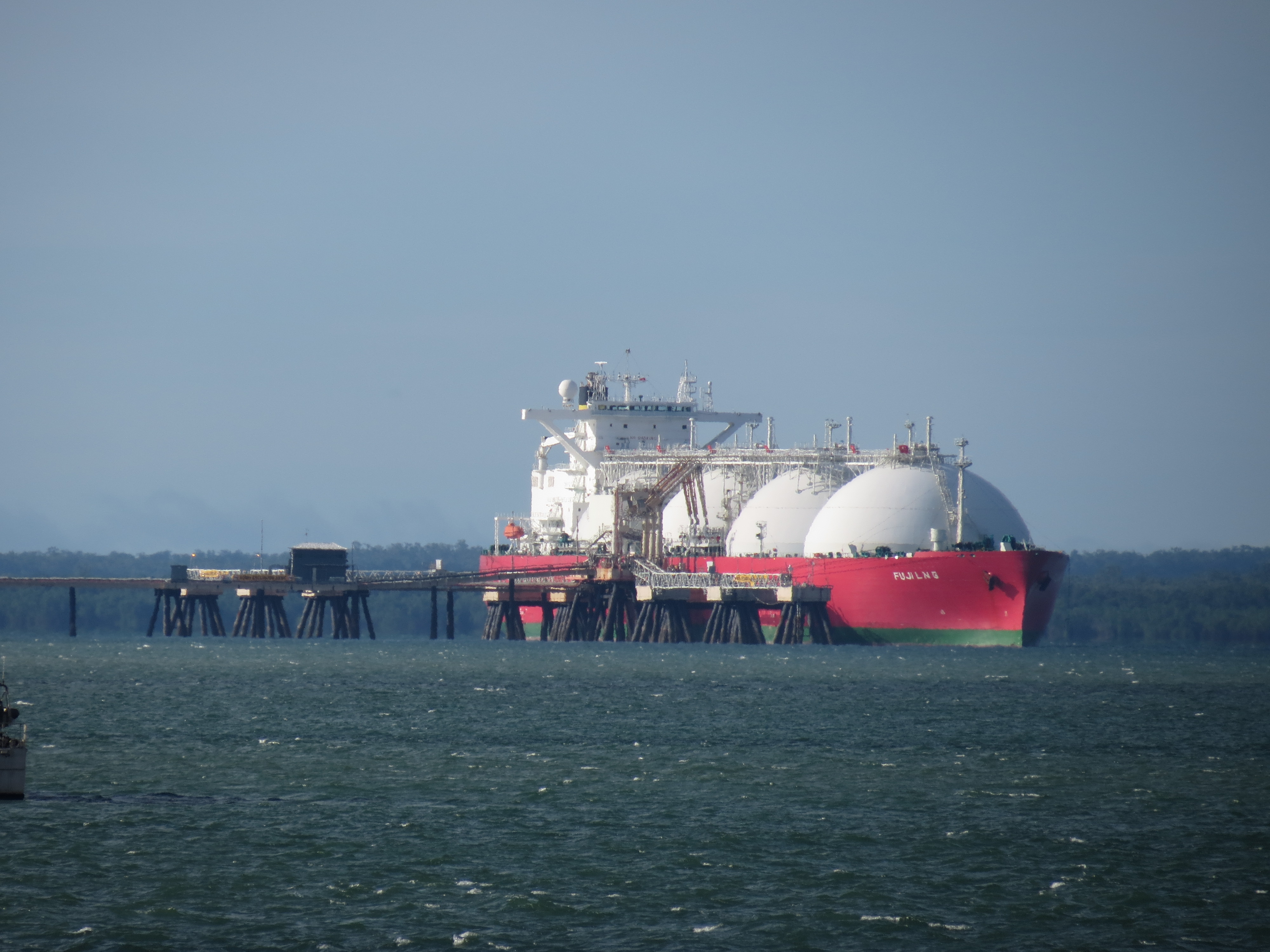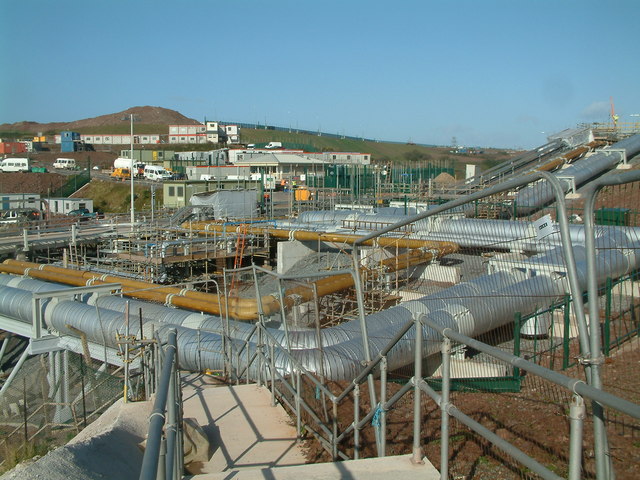|
Tembek
''Tembek'' a Q-Flex, Q-Flex ship is the first LNG carrier, liquefied natural gas (LNG) carrier to berth at Milford Haven (harbour), Milford Haven at the South Hook LNG terminal. Technical dates The auxiliary boilers EB150120 and MB0106DS08 were designed and manufactured by Kangrim. The emergency diesel generator power unit (KTA38-D(M)) was produced by Cummins Inc. The five main generator engines (7L32/40) were of MAN Diesel SE manufacture. The two main propulsion engines are diesel (6S70ME-C) and were supplied by MAN B&W. The two propellers are mono-block and were supplied by MMG (Mecklenburger Metallguss). Speed recorded (Max / Average) 20.4 / 18.4 knots References {{reflist LNG tankers 2006 ships ... [...More Info...] [...Related Items...] OR: [Wikipedia] [Google] [Baidu] |
Milford Haven (harbour)
Milford Haven Waterway (''Welsh: Dyfrffordd Aberdaugleddau'') is a natural harbour in Pembrokeshire, Wales. It is a ria or drowned valley which was flooded at the end of the last ice age. The Daugleddau estuary winds west to the sea. As one of the deepest natural harbours in the world, it is a busy shipping channel, trafficked by ferries from Pembroke Dock to Ireland, oil tankers and pleasure craft. Admiral Horatio Nelson, visiting the haven with the Hamiltons, described it as the next best natural harbour to Trincomalee in Ceylon (today's Sri Lanka ) and "the finest port in Christendom".Wing Commander Ken McKay ''A Vision of Greatness: The History of Milford 1790–1990'', Brace Harvatt Associates, 1989. Much of the coastline of the Waterway is designated as a Site of Special Scientific Interest, listed as Milford Haven Waterway SSSI. History Early history From the 790s until the Norman Invasion in 1066, the waterway was used occasionally by Vikings looking for she ... [...More Info...] [...Related Items...] OR: [Wikipedia] [Google] [Baidu] |
Samsung Heavy Industries
Samsung Heavy Industries Co., Ltd. ( Korean: 삼성중공업) is one of the largest shipbuilders in the world and one of the "Big Three" shipbuilders of South Korea (including Hyundai and Daewoo). Geoje (in Gyeongsangnam-do) is one of the largest shipyards in the world, having 3 dry docks and 5 floating docks. A core subsidiary of the Samsung Group, South Korea's largest conglomerate, SHI's main focus is on the engineering, procurement, construction, commissioning and the delivery of: transportation ships for the commercial industry, topsides modules, drilling and floating production units for the oil and gas sector, gantry cranes for fabrication yards, digital instrumentation and control devices for ships, and other construction and engineering services. SHI operates manufacturing facilities at home and abroad, including ship block fabrication factories in Ningbo and Rongcheng, China. The Geoje Shipyard in particular, SHI's largest shipyard in South Korea, boasts the highe ... [...More Info...] [...Related Items...] OR: [Wikipedia] [Google] [Baidu] |
Korea
Korea ( ko, 한국, or , ) is a peninsular region in East Asia. Since 1945, it has been divided at or near the 38th parallel, with North Korea (Democratic People's Republic of Korea) comprising its northern half and South Korea (Republic of Korea) comprising its southern half. Korea consists of the Korean Peninsula, Jeju Island, and several minor islands near the peninsula. The peninsula is bordered by China to the northwest and Russia to the northeast. It is separated from Japan to the east by the Korea Strait and the Sea of Japan (East Sea). During the first half of the 1st millennium, Korea was divided between three states, Goguryeo, Baekje, and Silla, together known as the Three Kingdoms of Korea. In the second half of the 1st millennium, Silla defeated and conquered Baekje and Goguryeo, leading to the " Unified Silla" period. Meanwhile, Balhae formed in the north, superseding former Goguryeo. Unified Silla eventually collapsed into three separate states due ... [...More Info...] [...Related Items...] OR: [Wikipedia] [Google] [Baidu] |
LNG Tanker
An LNG carrier is a tank ship designed for transporting liquefied natural gas (LNG). History The first LNG carrier ''Methane Pioneer'' () carrying , classed by Bureau Veritas, left the Calcasieu River on the Louisiana Gulf coast on 25 January 1959. Carrying the world's first ocean cargo of LNG, it sailed to the UK where the cargo was delivered. Subsequent expansion of that trade has brought on a large expansion of the fleet to today where giant LNG ships carrying up to are sailing worldwide. The success of the specially modified C1-M-AV1-type standard ship ''Normarti'', renamed ''Methane Pioneer'', caused the Gas Council and Conch International Methane Ltd. to order two purpose built LNG carriers to be constructed: '' Methane Princess'' and ''Methane Progress''. The ships were fitted with Conch independent aluminum cargo tanks and entered the Algerian LNG trade in 1964. These ships had a capacity of . In the late 1960s, opportunity arose to export LNG from Alaska to Japan, a ... [...More Info...] [...Related Items...] OR: [Wikipedia] [Google] [Baidu] |
Q-Flex
Q-Flex is a type of ship, specifically a membrane type liquefied natural gas carrier. Technical description Q-Flex vessels are propelled by two slow speed diesel engines, which are claimed to be more efficient and environmentally friendly than traditional steam turbines. Q-Flex carriers are equipped with an on-board re-liquefaction system to handle the boil-off gas, liquefy it and return the LNG to the cargo tanks. The on-board re-liquefaction system reduces LNG losses, which produces economic and environmental benefits. Overall, it is estimated that Q-Flex carriers have about 40% lower energy requirements and carbon emissions than conventional LNG carriers. The capacity of a Q-Flex vessel is between 165,000 m3 and 216,000 m3. Until the entry into service of the Q-Max-type carrier, it was the world's largest LNG carrier type with a capacity of 1.5 times that of conventional LNG carriers. Contractors The first Q-Flex LNG carrier was delivered by Hyu ... [...More Info...] [...Related Items...] OR: [Wikipedia] [Google] [Baidu] |
LNG Carrier
An LNG carrier is a tank ship designed for transporting liquefied natural gas (LNG). History The first LNG carrier '' Methane Pioneer'' () carrying , classed by Bureau Veritas, left the Calcasieu River on the Louisiana Gulf coast on 25 January 1959. Carrying the world's first ocean cargo of LNG, it sailed to the UK where the cargo was delivered. Subsequent expansion of that trade has brought on a large expansion of the fleet to today where giant LNG ships carrying up to are sailing worldwide. The success of the specially modified C1-M-AV1-type standard ship ''Normarti'', renamed ''Methane Pioneer'', caused the Gas Council and Conch International Methane Ltd. to order two purpose built LNG carriers to be constructed: '' Methane Princess'' and ''Methane Progress''. The ships were fitted with Conch independent aluminum cargo tanks and entered the Algerian LNG trade in 1964. These ships had a capacity of . In the late 1960s, opportunity arose to export LNG from Alaska to Japan, ... [...More Info...] [...Related Items...] OR: [Wikipedia] [Google] [Baidu] |
South Hook LNG Terminal
South Hook LNG terminal is an LNG regasification terminal near Milford Haven and is the largest LNG terminal in Europe. Together with the smaller Dragon LNG terminal nearby, it can handle up to 25% of the UK's gas requirement. The first tanker docked on 20 March 2009. History The project was announced in April 2003. The terminal is located at the former Esso refinery at South Hook, Herbrandston. Description The terminal is built to receive, store and re-gasify liquefied natural gas shipped from the Qatargas 2 LNG plant in Qatar. There are five storage tanks located onsite. The large tanks are each 94 metres in diameter and 31 metres high, rising another 12 metres to the top. The volume of a large tank is roughly that of the Albert Hall. The regasified natural gas is fed through the South Wales Gas Pipeline to the national gas network at Tirley, Gloucestershire. Project company The terminal is owned and operated by the South Hook LNG Terminal Company Ltd, a joint venture ... [...More Info...] [...Related Items...] OR: [Wikipedia] [Google] [Baidu] |
MAN Diesel
MAN Diesel SE was a German manufacturer of large-bore diesel engines for marine propulsion systems and power plant applications. In 2010 it was merged with MAN Turbo to form MAN Diesel & Turbo. History * In 1980, MAN acquired the Burmeister & Wain Danish shipyard and diesel engine producer. Though engine production at Christianshavn was later discontinued in 1987, successful engine programs were rolled out. At Teglholmen in 1988 a spare parts and key components production factory was established as was an R&D Centre at the same site in 1992. Though all Copenhagen operations were consolidated at Teglholmen in 1994 and the last volume production unit at the B&W Shipyard was delivered in 1996, in 2000 MAN B&W Diesel two-stroke diesel engines had over 70% market share, with a substantial number of MC-line engines on order. * The electronically controlled line of ME diesel two-stroke engines was added in 2002 with a maximum cylinder bore of 108 cm. MAN B&W Diesel, Denmark, e ... [...More Info...] [...Related Items...] OR: [Wikipedia] [Google] [Baidu] |
LNG Tankers
Liquefied natural gas (LNG) is natural gas (predominantly methane, CH4, with some mixture of ethane, C2H6) that has been cooled down to liquid form for ease and safety of non-pressurized storage or transport. It takes up about 1/600th the volume of natural gas in the gaseous state (at standard conditions for temperature and pressure). LNG is odorless, colorless, non-toxic and non-corrosive. Hazards include flammability after vaporization into a gaseous state, freezing and asphyxia. The liquefaction process involves removal of certain components, such as dust, acid gases, helium, water, and heavy hydrocarbons, which could cause difficulty downstream. The natural gas is then condensed into a liquid at close to atmospheric pressure by cooling it to approximately ; maximum transport pressure is set at around (gauge pressure), which is about one-fourth times atmospheric pressure at sea level. The gas extracted from underground hydrocarbon deposits contains a varying mix of hydr ... [...More Info...] [...Related Items...] OR: [Wikipedia] [Google] [Baidu] |




